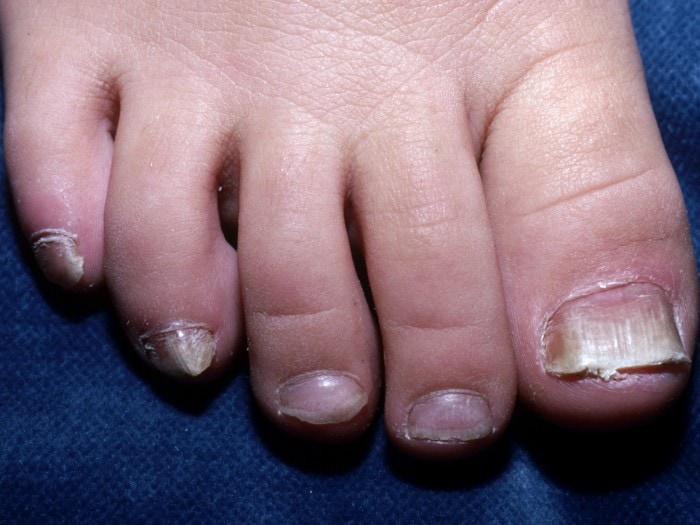Published on
Differential Diagnosis
- Onychomycosis
- Nail psoriasis
- Subungual wart
- Nail candidiasis

Diagnosis
This patient was diagnosed with onychomycosis, a fungal infection of the nail (tinea unguium) caused by dermatophyte fungi and, less frequently, by nondermatophyte molds or yeasts.
Onychomycosis is more frequent in men and is commonly associated with concurrent tinea pedis. The prevalence of onychomycosis in children varies from 0.2% to 2.6% (mean 0.3%). The low prevalence in children compared with adults is thought to be due to children’s fast nail-plate growth and their lower incidence of tinea pedis, compared with adults.
Learnings/What to Look for
- Predisposing factors include diabetes mellitus, peripheral vascular disease, immunosuppression, genetic predisposition, atopic dermatitis, psoriasis, Down syndrome, occlusive footwear, obesity, malignancy, trauma, and older age
- Personal history of tinea pedis and/or contact with a household member with onychomycosis/tinea pedis are among the most common risk factors
- Toenails are more commonly affected than fingernails, and fingernail infection is typically preceded by or associated with toenail infection
Pearls for Urgent Care Management
- Topical antifungal applications are effective in theory, though penetrating the nail is challenging. Debridement or removing the infected part of the nail may be helpful
- Oral medications such as itraconazole, terbinafine, and fluconazole but may require monitoring through blood tests and should be avoided in patients with liver disease
- Counsel parents to help children keep toenails short, to ensure shoes fit properly, and to encourage children to wash and dry their feet thoroughly
- With recurrence, families should be advised to consult a pediatric dermatologist
Acknowledgment: Images and case presented by VisualDx (www.VisualDx.com/JUCM).
A 7-Year-Old Girl with White Patches on Her Toenails
1 2
